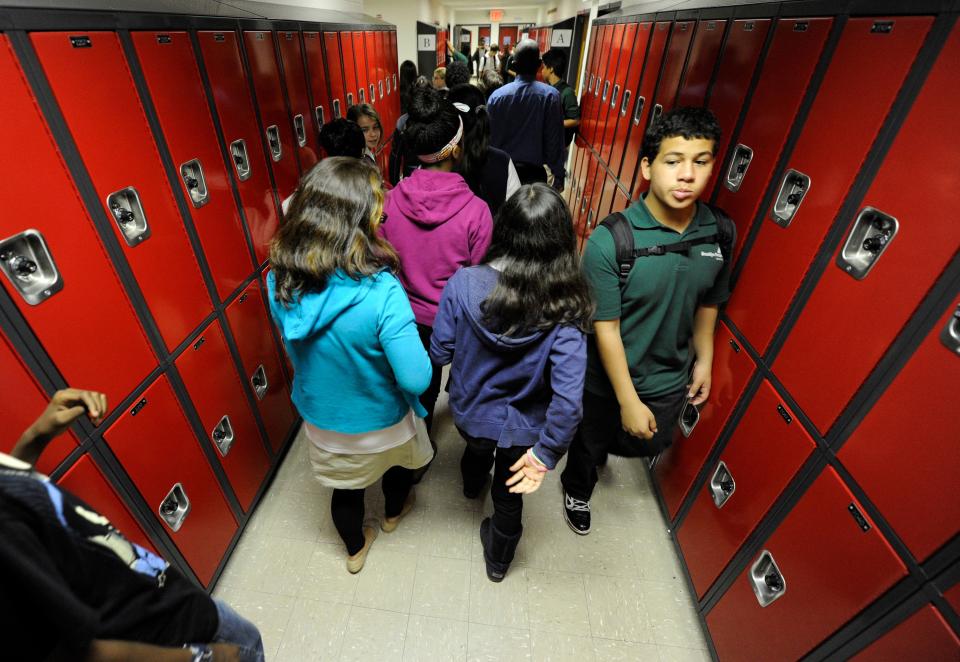I teach eighth-graders math during the day. At night, I wash my poorest students' clothes.

At the end of the school day, an eighth-grade student came to my classroom with a small bundle of clothes. She whispered to me that her mom doesn’t have money for the laundromat this week. Would I help her with her uniform?
I teach math at an underserved middle school in the greater Boston area. More than 90 percent of my students are people of color, and about 70 percent qualify for a free or reduced-price lunch. In our working-class community, many households share rooms with other families in old houses without amenities such as washing machines.
Friends in noneducation fields are shocked when I mention that I wash my students’ uniforms periodically. During my second year as a teacher, I realized that some of my students were skipping school because they didn’t have a dependable adult figure who could help them with basics needs, such as food security and hygiene. If they came to class with an unwashed uniform, they would be literally airing the dirty laundry of their dysfunctional home life. I started offering to wash my students’ clothes because I wanted to show them that there was an adult in school who cared about them.
Read more commentary:
My daughter's teacher is on strike. As a mom, I stand on the picket line with her.
My special needs students needed their teachers in the classroom — not on the picket line
My high school's transgender bathroom policies violate the privacy of the rest of us
For many of our underserved students, addressing their nonacademic needs are as important as creating an effective academic curriculum.
Teachers serve in and out of the classroom
Schools face significant challenges in supporting low-income students, whose financial situations hamper their ability to succeed. A few weeks ago, an Indiana school superintendent was charged with insurance fraud after obtaining antibiotics for a student who might be suffering from strep throat by claiming that the student was her son. Although her action was illegal, I sympathized with her as I personally know many students who cannot visit the doctor because of their financial status.
As a child, I also skipped doctor appointments because of my parents’ inability to pay. Now, I use my privilege as an educator to help my underserved learners. By washing their uniforms, offering extra math help and paying out of pocket for school supplies, I help build the confidence of my students so that they can get the most out of their classroom education.
Many other teachers go the extra mile for their students. According to a 2018 study by the National Center of Education Statistics, a significant majority of public school teachers spend $480 per year to purchase school supplies even though teachers qualify for a federal $250 tax deduction. There are teachers who volunteer after school to help with homework and oversee clubs and activities. Despite their modest income, many teachers spend their time and money to support their students in and out of their classroom.

However, teachers alone cannot address the stressors created by the shortcomings of our society. The United States needs to invest more in schools and provide support for our teachers, students and their families. Educators need professional training to work with diverse populations. Furthermore, as demanded by teacher strikes throughout the country, we need to help our at-risk youth gain access to more counselors and social workers to help them with problems outside of school.
Unfortunately, the great amount of work that remains to be done and the lack of resources to this end have pushed teachers to quit their jobs and look for employment elsewhere. Public education employees such as teachers and school psychologists are quitting their jobs at a record rate. The Labor Department reported that in the first 10 months of last year, public educators quit at an average rate of 83 per 10,000 each month.
We cannot rely solely on teachers to solve the numerous problems plaguing the American public education system. We need to build and reinvent learning models and student support systems to ensure that all students — not just the privileged few — have access to high-quality education. We need to fix the education system to enable students to pursue professional and financial autonomy and to help them become productive members of our society.
Yoo Eun Kim is a member of the Teach for America Alumni Advisory Board and an eighth-grade math teacher.
You can read diverse opinions from our Board of Contributors and other writers on the Opinion front page, on Twitter @usatodayopinion and in our daily Opinion newsletter. To respond to a column, submit a comment to letters@usatoday.com.
This article originally appeared on USA TODAY: I teach eighth-graders math during the day. At night, I wash my poorest students' clothes.

